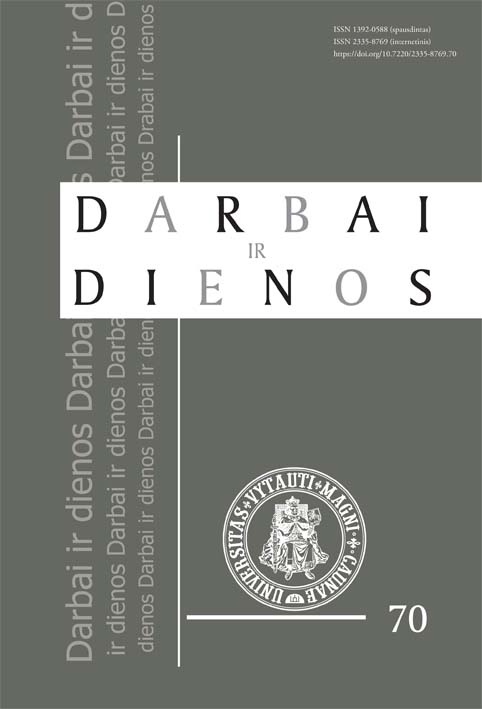Dalelytė „ir“ – aprašai ir vartosena dabartinėje rašytinėje lietuvių kalboje
The Particle “ir” – Descriptions and Usage in Contemporary Standard Written Lithuanian
Author(s): Danguolė ValančėSubject(s): Morphology, Baltic Languages
Published by: Vytauto Didžiojo Universitetas
Keywords: Particle „ir“; Focus particle; Morphological multi-word unit; Contemporary standard written Lithuanian grammars; Contemporary standard written Lithuanian corpus;
Summary/Abstract: As stated in Lithuanian grammars, the particle “ir” (also) is used to single out, intensify, and connect words, phrases, and sentences. In Lithuanian dictionaries, “ir” is considered to be not only a particle but also an adverb. In the current study, the lexical unit “ir” is viewed as a conjunction and as a particle. Thus, when selecting the instances of the particle “ir”, it was, first of all, established whether “ir” functions as a conjunction, which connects homogeneous parts of a sentence or sentences. In all other cases, “ir” was treated as a particle. In total, 33,339 cases of the usage of „ir„ were found; however, “ir” as a particle was used in 2,716 instances. Besides, it was found that in 1781 cases the particle “ir” was used after conjunctions, linking words and other particles. In most cases, the particle “ir” is used with nouns and noun phrases, when it is important to emphasize their meaning, for example: “Aš ir arbatos išvirčiau”. (I would make some tea as well.) Sometimes, the particle “ir” is used with nouns in order to complement them. In such cases, the particle “ir” corresponds to multi-word particles “taip pat”, “taip pat ir”, for example: “Tokį pat poveikį sukelia ir kofeinas, alkoholis ar padidėjęs nervingumas”. (The same effect is also caused by caffeine, alcohol, or increased anxiety.) When the particle “ir” is used before verbs, adjectives, and adverbs, it performs an emphatic function. If the particle “ir” is used before pronouns or pronoun phrases, it functions as an additive particle. Moreover, when used before prepositional constructions, the particle “ir” may perform both additive and emphatic functions. Thus, in most cases, the particle “ir” is emphatic, whereas its other functions depend on the part of speech of the word it emphasizes and the context. The particle “ir” also interacts with a functional sentence perspective. One of the more significant findings to emerge from the study of the CCLL examples is that the particle “ir” is rarely used at the beginning of a sentence. In cases when “ir” takes the initial position in a sentence before conjunctions or linking words, it functions as a conjunction but not as a particle. There are a lot of examples in the CCLL where the particle “ir” is used after conjunctions. This position in a sentence is characteristic of the particle “ir”. Together with some conjunctions, this particle makes morphological multi-word units (“kad ir”, “nors ir”, “bet ir”, “lyg ir”, “kaip ir”, etc.); one of the multi-word units “kad ir” functions as a conjunction of concession. The usage of the particle “ir” after linking words or other particles which perform a linking function is much less common, although in these cases the emphatic function of the particle “ir” predominates. The typical position of the particle “ir” is after a verb before a noun or a noun phrase. In such a position, the particle performs an emphatic function, as in the following example: “Nepavyko to užmiršti ir mirties valandą...” (It was impossible to forget that even at the moment of death.) The particle “ir”, like the particle “net”, may take the same position in a sentence; however, they are differently influenced by the preceding sentences and the context.
Journal: Darbai ir dienos
- Issue Year: 2018
- Issue No: 70
- Page Range: 31-56
- Page Count: 26
- Language: Lithuanian

